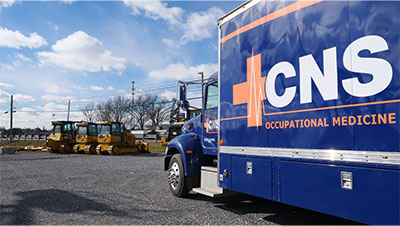OSHA acknowledges they can only inspect a small portion of the nation’s workplaces each year, and it would take many decades to inspect each covered workplace in the nation even once.
As a result, to reduce worker injuries and illnesses, OSHA is looking to increase its impact on the many thousands of establishments where workers are being injured or made ill, but OSHA does not have the resources to inspect.
On March 28, 2022, OSHA proposes to expand electronic collection of “establishment-specific, case-specific” recordkeeping data. This would help OSHA encourage employers to prevent worker injuries and illnesses by greatly expanding their access to information employers are already required to collect.
OSHA proposes to amend its regulation:
- To require establishments with 100+ employees, in certain industries, to submit information annually and electronically from their OSHA Forms 300, 301, and 300A
- Establishments with 20+ employees, in certain industries, would continue to be required to submit information annually and electronically from their OSHA Form 300A annual summary
- OSHA also proposes to update the classification system used to determine the list of industries covered by the electronic submission requirement
- OSHA intends to post the data on a public website after identifying and removing information that reasonably identifies individuals directly (such as individuals’ names and contact information)
- OSHA is proposing to require establishments to include their company name when making electronic submissions to OSHA
The main purpose of the proposed rule is to prevent worker injuries and illnesses through the collection and use of timely, establishment-specific injury and illness data.
With the information obtained through this proposed rule, employers, employees, employee representatives, the government, and researchers would be better able to identify and mitigate workplace hazards and thereby prevent worker injuries and illnesses.
OSHA recordkeeping requirements today
OSHA has four main requirements today when it comes to electronically collecting or submitting data to the government.
- Establishments with 250+ employees in industries that are required to routinely keep OSHA injury and illness records to electronically submit information from the Form 300A summary to OSHA once a year
- Establishments with 20-249 employees in certain designated industries to electronically submit information from their Form 300A summary to OSHA once a year
- Upon notification, employers must electronically submit requested information from their part 1904 records to OSHA
- Each establishment that must electronically submit injury and illness information to OSHA to also provide their Employer Identification Number (EIN) in their submittal
Benefits of the extra electronically submitted workplace injury data
Using data newly accessible under this proposed rule, there are four major benefits:
- The information would enable interested parties to gauge the full range of injury and illness case types at the establishment
- Employers could compare case-specific injury and illness information at their establishments to those at comparable establishments and set workplace safety/health goals benchmarked to the establishments they consider most comparable
- Online availability of “case-specific, establishment-specific” injury and illness information would allow employees to compare their own workplaces to the safest workplaces in their industries.
- Access to these data could improve the workings of the labor market by providing more complete information to job seekers, and, as a result, encourage employers to abate hazards to attract more in-demand employees.
This could also encourage employers with more hazardous workplaces in each industry to make improvements in workplace safety and health, because potential employees, especially the ones whose skills are most in demand, might be reluctant to work at more hazardous establishments.
For example, OSHA could send hazard-specific educational materials to employers who report high rates of injuries or illnesses related to those hazards.
OSHA would be better able to refer employers who report certain types of injuries/illnesses to OSHA’s free on-site consultation program and also be able to add specific hazards or types of injury or illness to the Site-Specific Targeting (SST) program, which currently is based on establishments’ overall injury/illness rates.
What is the proposed rule’s economic impact?
OSHA estimates that this proposed rule would have economic costs of $4.3 million per year, including $3.9 million per year to the private sector, with costs of $81 per year for affected establishments with 100 or more employees in designated industries.
The agency believes that the annual benefits, while unquantified, would significantly exceed the annual costs.
OSHA seeks comment on this proposal.
Have an illness and want to avoid busy Doctor’s offices or medical facilities?
Start your customized health plan to meet your business needs and keep your employees healthy and safe.
Our Occupational Medicine Team will develop a custom plan for your company. You may need a combination of services related to:
We understand the impact that lost time, limited duty, and medical costs have on the company and the employee. So, work with an occupational medicine provider that can be staffed on-site or have a mobile health clinic come to reduce employee downtime away from the office.
We also have a strong understanding of the OSHA recordkeeping rule and how certain medical diagnoses and treatments impact your OSHA 300 log.
Contact our medical team to develop your custom plan at 800.551.9816 or info@cnsoccmed.com or contact us with questions about nurse triage phone lines and telemedicine or to schedule a CNS Telemedicine appointment.










